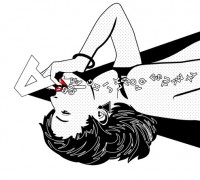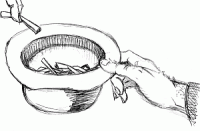Jamieson Webster: The Accidents of Psychoanalysis – New York Times Couch
“In the aftermath of what we shrinks call “August” — a euphemism for the acute clinical moments that our patients experience while we’re away for the standard three to five weeks of vacation — I found myself reflecting on a series of physical accidents that befell too many of my patients during my break not to note. If two patients fall down stairs, another is involved in a pedestrian accident, one more falls off her bike and yet another suffers severe burns, what am I to make of this? Was it coincidence? Or were their mishaps somehow a continuation of their work with me in analysis?” Click here to read more
Cecilia Wu: Reflections on Marcus Coelen’s Philological Psychoanalysis
Here are some notes, reflections and questions on Marcus Coelen, Hannah Wallerstein, and Jamieson Webster’s presentations and the conversations that followed: 1) The Lending of Material, and the Dance of Withholding – Marcus names the 3 compliances or plasticities of materiality of psychoanalysis: contingency, soma, and language. – To consider compliance not as conformity to the mandates of a control room, but as that which lends and is not yet meaningful – To consider the sense of what is put forth without exercising the privileged agency to take it up – To withhold interpretation and suspend judgment (aphexia). To think of this gesture of holding in suspension as a kind of dance that is not ‘horrified with its hands tied behind its back’ – ...Read More
Angelo Villa: Psychoanalysis and the Handicapped
“Over the last few years, definitions of handicaps and disabilities have multiplied themselves, either generating improbable neologisms or exploring language in search of an impossible formula which may combine the designation of a difference with its negation. The ensuing feeling of confusion has consequently increased. Words, the sea of words and of more or less politically correct linguistic inventions, go their way. Handicap is nailed somewhere else, like an obstinate, unemotional warrior observing the corpse of his enemy as it is washed to his feet by the flow of the river. The task that words are required to perform is that they may open and close, dilate and bend like rubber to the needs of reality, which literally looks incomprehensible and unbearable to the “normal” human be...Read More
Patricia Gherovici: Two Fund(a)mental Concepts of Lacanian Psychoanalysis – A Course on The Phallus and object a
Can psychoanalysis rethink sexuality without fully relying on the controversial and contested notion of the phallus? The simplest, schematic version of the Freudian Oedipal model offers a binary logic of having or not having it, of presence or absence: boys have it, girls don’t. For Freud, castration is a loss that women think they have suffered and that men fear. For Lacan, the phallus is clearly not the penis; for him castration is even a more fundamental loss affecting both sexes since both sexes are castrated. Nobody can have the phallus or can be it. In the mother’s body, nothing is missing. Lack is purely a logical limit—the mother is deprived of something she does not have. The phallus is the object that appears to veil a symbolic lack. It should not come as a surprise that Lacan’s ...Read More
Genevieve Morel: The Unsinkable Fantasy
“Because the symptom is a source of complaint, we speak about it in psychoanalysis, to get rid of it. To the contrary, fantasy is so enjoyable that there is no incentive to speak of it, as Freud had noticed. We would rather keep to ourselves this intimate and painless satisfaction. Yet, without addressing the fantasy, there is no hope for symptoms to give in, even though they appear to be altering. However, the fantasy cannot be deciphered, even as the symptoms it is built on are spoken of. What can be done then? With the use of clinical and literary examples, we will assess how Lacan theorized psychoanalysis as a staging of the fantasy, hence reversing the Freudian perspective. One possible outcome of analysis could therefore entail a loss of the fantasy’s substance, leading to a re...Read More
Marc Strauss: On Female Obsessional Neurosis
“What is the obsessional neurosis as such is not an easy question, because even the most characteristic symptom such as the ritual or the OCD, as it is called nowadays, belongs to the most different personalities. Lacan used the structural model because there is no symptom that would characterize one structure or clinical type. The diagnosis is based on the coherence of the whole that corresponds to the way a speaking being arranges impossibility: the impossible unification of the living substance of the body and of the subject represented by the signifier.” Click here to read full text in The European Journal of Psychoanalysis – Number 2 – February 2014
Patricia Gherovici & Jamieson Webster: Observations from Working with Female Obsessionals
“Where have all the beautiful hysterics gone? Lacan once asked. Is it possible that there may have been a shift from obsessionality as a defining core feature of male neurosis, what Freud calls a “preference” or “choice”, to obsessionality as a veneer that covers over hysteria in women as much as men. We would like to offer some observations and speculations from our clinical practice in the United States where more and more often we encounter what we see as a tendency to female obsessionality and investigate what might be different about obsessional features in men and women, and also, how this might define differently the direction of the treatment.” Click here to read full text published in The European Journal of Psychoanalysis – Number 2 – February 2014
Jamieson Webster & David Lichtenstein: Jacques Lacan’s Return to Freud and Its Clinical Implications II
A common misconception concerning Jacques Lacan is that his work was inherently un-clinical— that he did not discuss clinical issues concerning technique or provide clinical cases—making him more of a philosopher or meta-theoretician. In this course, we hope to dispel this mischaracterization and begin with key clinical cases touched on by Lacan during his Seminars from 1952-1980, from Freud’s Little Hans and The Case of a Female Homosexual, to his discussion of cases by other psychoanalysts such as Ernst Kris, Ella Freeman Sharpe, and Joan Riviere. Through this reading of cases and Lacan’s often unknown and extensive commentary on them, we hope to touch on some key Lacanian concepts— the signifier, desire, castration, the Real, and feminine sexuality— in order to better grasp their place ...Read More















